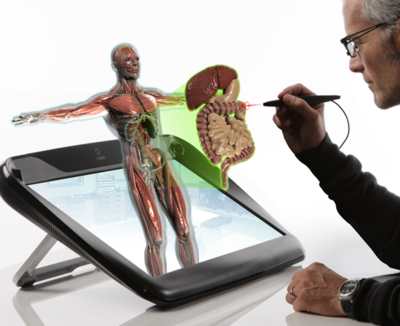| Z Space - A Real 3D Display |
| Written by David Conrad |
| Tuesday, 01 January 2013 |
|
Just as 3D TV is in its final death-throws, 3D display technology might be about to push augmented reality into another "dimension". This is 3D on steriods and it goes well beyond what passive 3D TV can manage. It is based on using glasses to channel a left and right eye image to the correct eye but the glasses also serve to indicate where the viewer is looking. The system uses this information to present the viewer with a custom 3D render that is appropriate to the viewpoint. This allows you to look around the side of an object by moving.
A special stylus also allows you to pick up the 3D objects and manipulate them. It doesn't take much imagination to see that with such a realistic display, and the ability to interact with the rendered objects, there are lots of possible applications - some serious and some game-based. You can see the display in action in the following video:
A more recent video shows the degree of interaction that is possible:
The company that makes the display - Infinite Z - has just issued an SDK that can be used to create custom applications. The display costs just less than $4000, but with the SDK you can get one for $1500. Presumably if you do invent a killer app then the cost would come down with scale.
More InformationRelated ArticlesKinectFusion - instant 3D models Avatar Kinect - a holodeck replacementTo be informed about new articles on I Programmer, install the I Programmer Toolbar, subscribe to the RSS feed, follow us on, Twitter, Facebook, Google+ or Linkedin, or sign up for our weekly newsletter.
Comments
or email your comment to: comments@i-programmer.info
|
| Last Updated ( Tuesday, 01 January 2013 ) |




